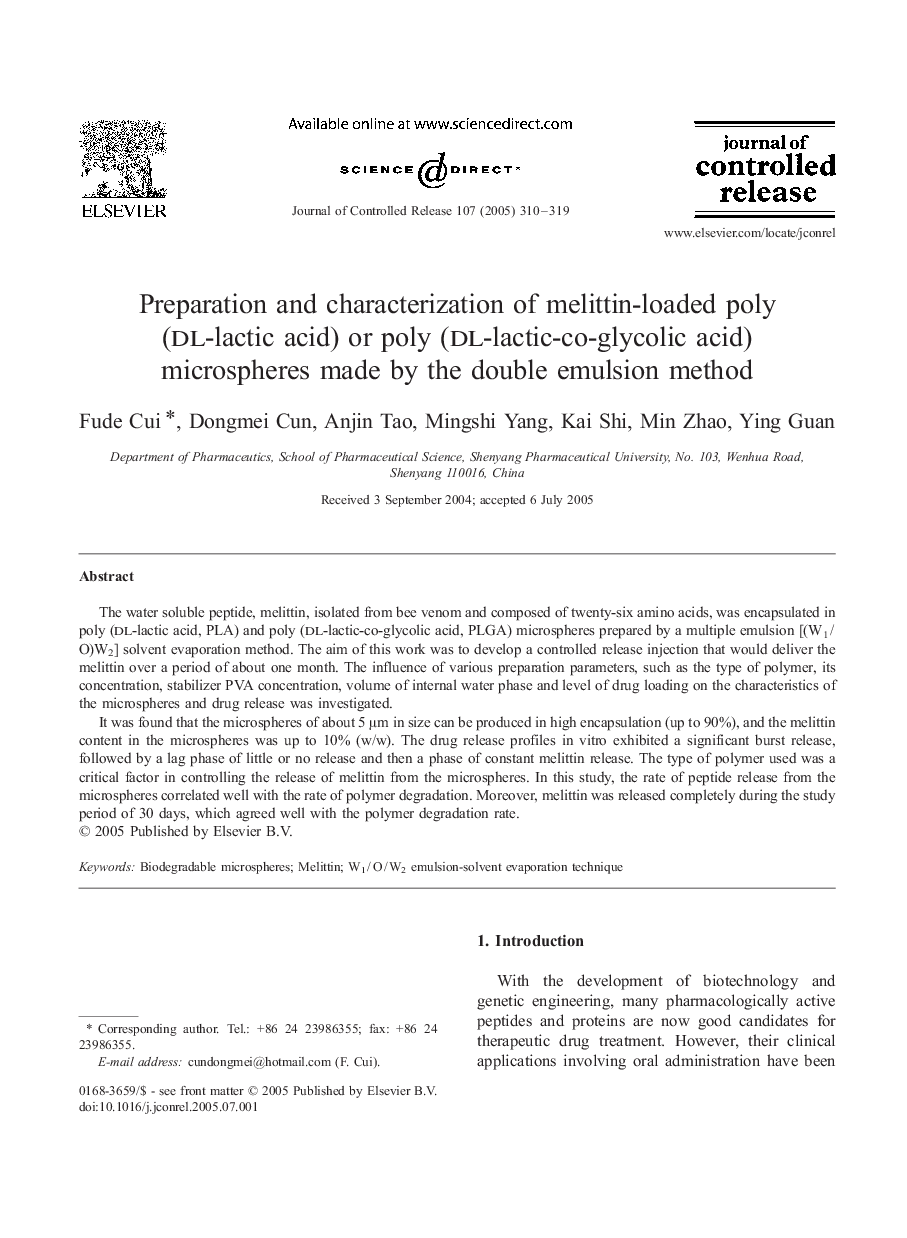| Article ID | Journal | Published Year | Pages | File Type |
|---|---|---|---|---|
| 10613479 | Journal of Controlled Release | 2005 | 10 Pages |
Abstract
It was found that the microspheres of about 5 μm in size can be produced in high encapsulation (up to 90%), and the melittin content in the microspheres was up to 10% (w/w). The drug release profiles in vitro exhibited a significant burst release, followed by a lag phase of little or no release and then a phase of constant melittin release. The type of polymer used was a critical factor in controlling the release of melittin from the microspheres. In this study, the rate of peptide release from the microspheres correlated well with the rate of polymer degradation. Moreover, melittin was released completely during the study period of 30 days, which agreed well with the polymer degradation rate.
Keywords
Related Topics
Physical Sciences and Engineering
Materials Science
Biomaterials
Authors
Fude Cui Fude Cui, Dongmei Cun Dongmei Cun, Anjin Tao Anjin Tao, Mingshi Yang Mingshi Yang, Kai Shi Kai Shi, Min Zhao Min Zhao, Ying Guan Ying Guan,
